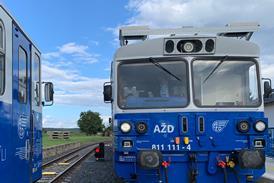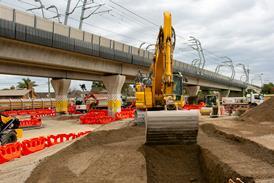- News
- In depth
- Events
- Data
- Maps
- Tenders & Jobs
 Railway Plant Engineer
Railway Plant Engineer RFI No. 608/2025 regarding innovative acoustic solutions for metro stations for NTA
RFI No. 608/2025 regarding innovative acoustic solutions for metro stations for NTA Invitation for Pre-Qualification no. 589/2025 for the Participation in Tenders for the Execution of Infra #1 Works in connection with the Tel Aviv Metropolitan Metro Lines, Israel
Invitation for Pre-Qualification no. 589/2025 for the Participation in Tenders for the Execution of Infra #1 Works in connection with the Tel Aviv Metropolitan Metro Lines, Israel RFI No. 611/2025- for Technological and Innovative Solutions for Depot Equipment and Machinery Plant for the Metro Network
RFI No. 611/2025- for Technological and Innovative Solutions for Depot Equipment and Machinery Plant for the Metro Network
- Sponsored content
- Insights
Close menu
- Home
-
News
- Back to parent navigation item
- News
- Traction and rolling stock
- Passenger
- High speed
- Freight
- Infrastructure
- Policy
- Technology
- Ticketing
- Business
- Research, training and skills
- Accessibility and inclusion
- People
- Urban rail news
- Suburban and commuter rail
- Metro
- Light rail and tram
- Monorail and peoplemover
- Regions
- InnoTrans
- In depth
- Events
- Data
- Maps
- Tenders & Jobs
- Sponsored content
- Insights
DaQin line strengthened
By Railway Gazette International2005-08-01T10:00:00
Traffic on the 632 km Datong - Qinhuangdao heavy haul coal line increased from 123·7 million gross tonnes in 2003 to 150 MGT last year, according to Liu Zhengjie of the China Academy of Railway Sciences. He told the Railway Engineering conference in London on June 30 that this year ...
Already have an account? LOG IN
To continue…
You’ve reached your limit of content for the month










